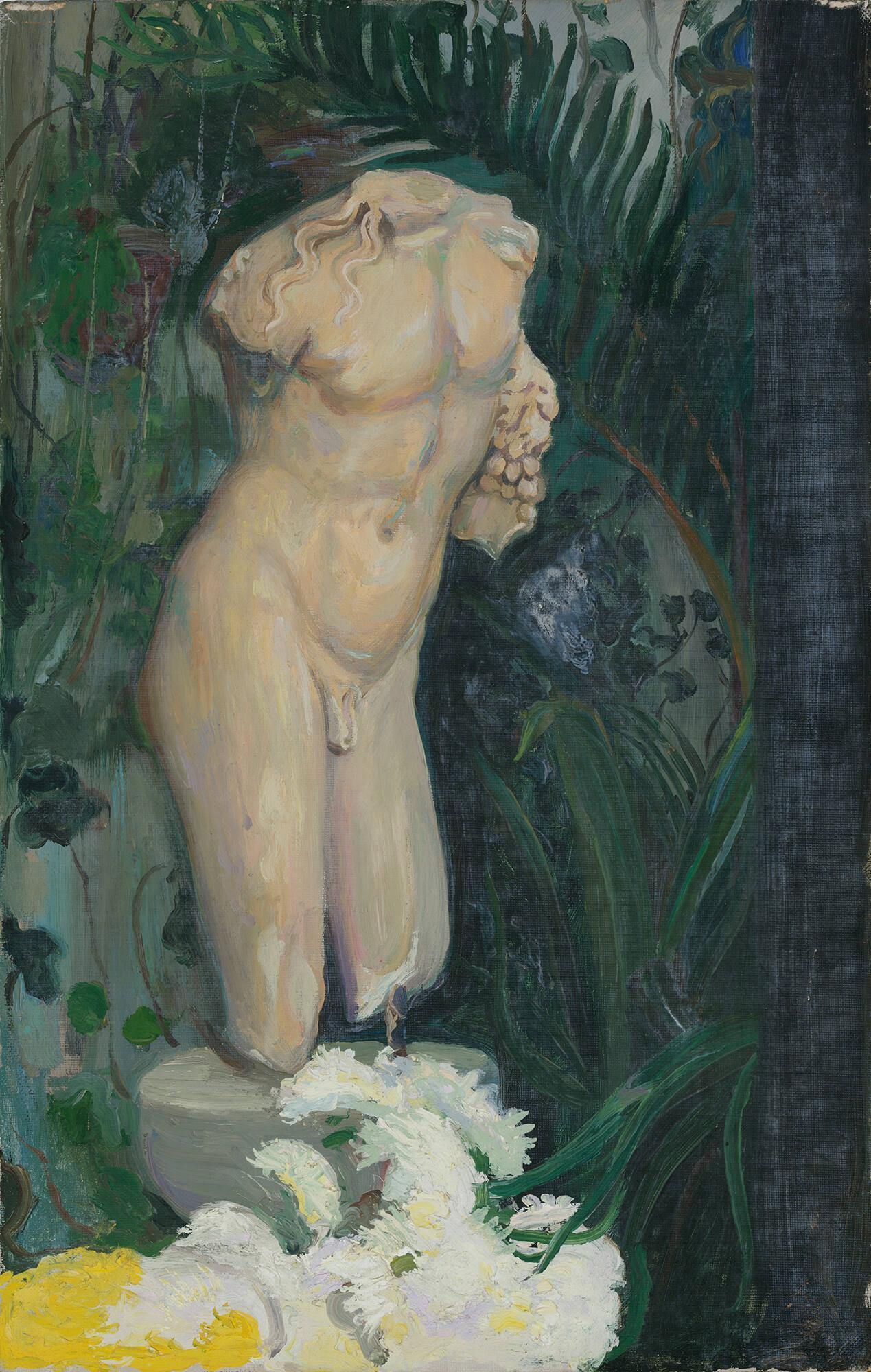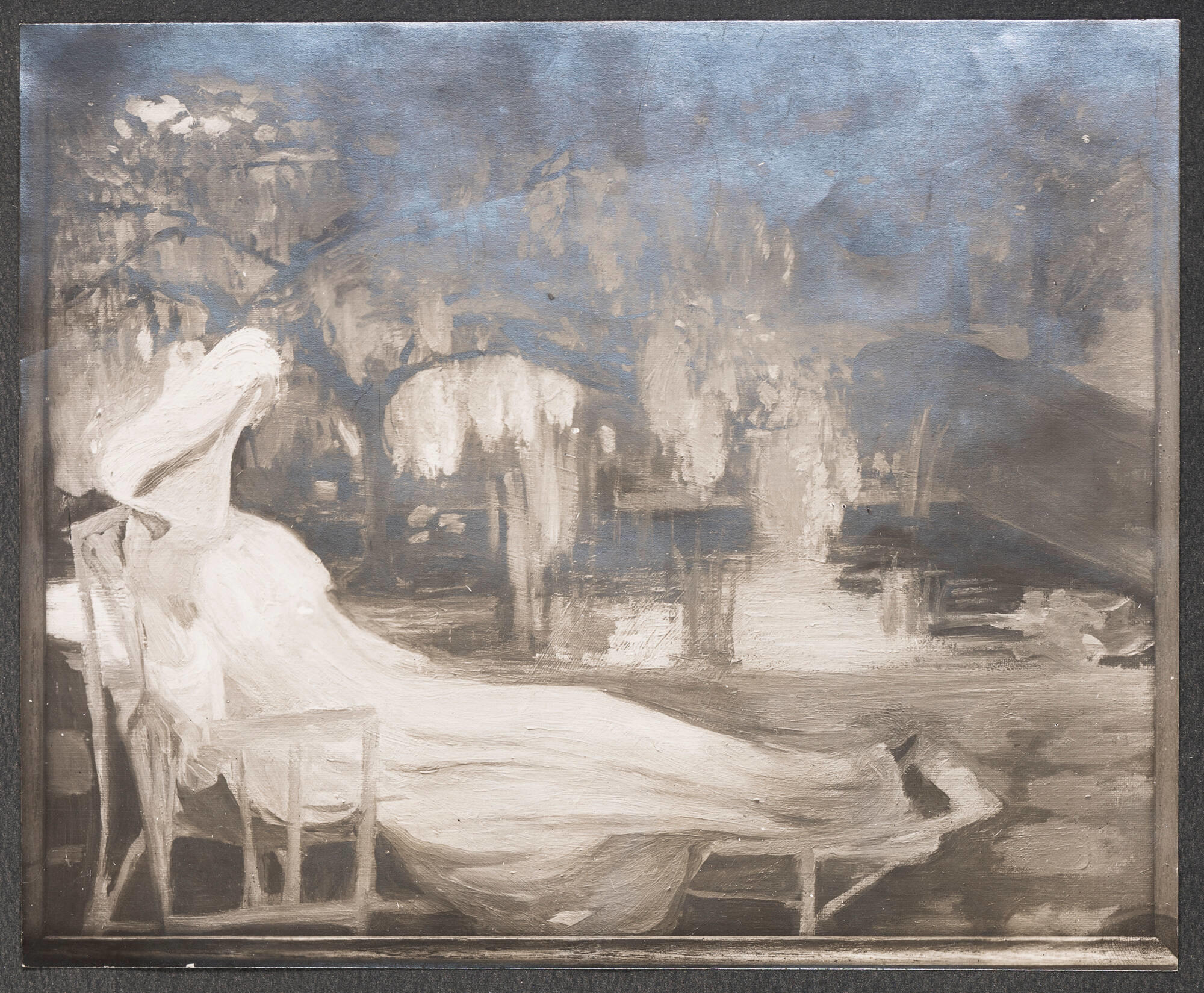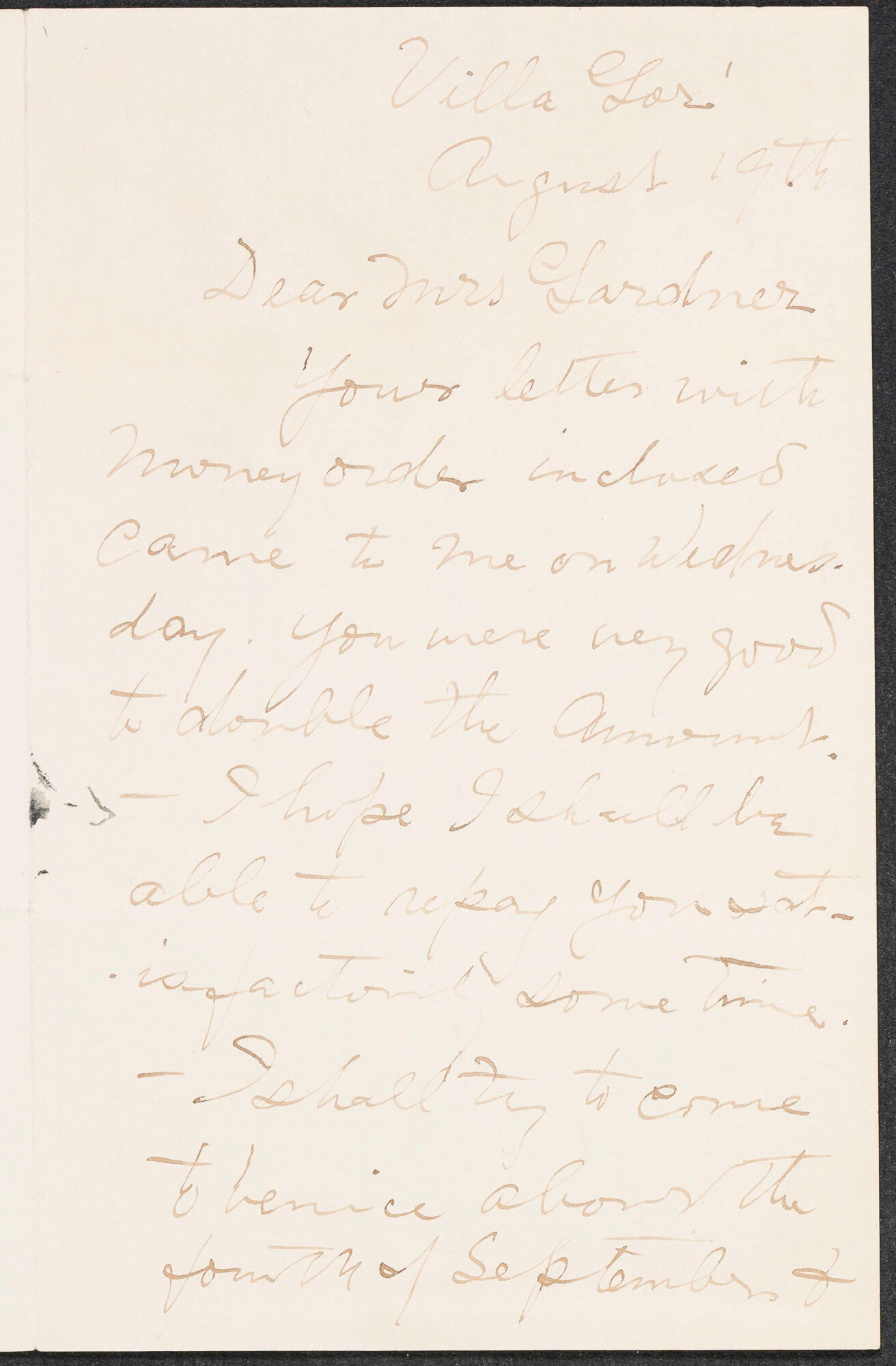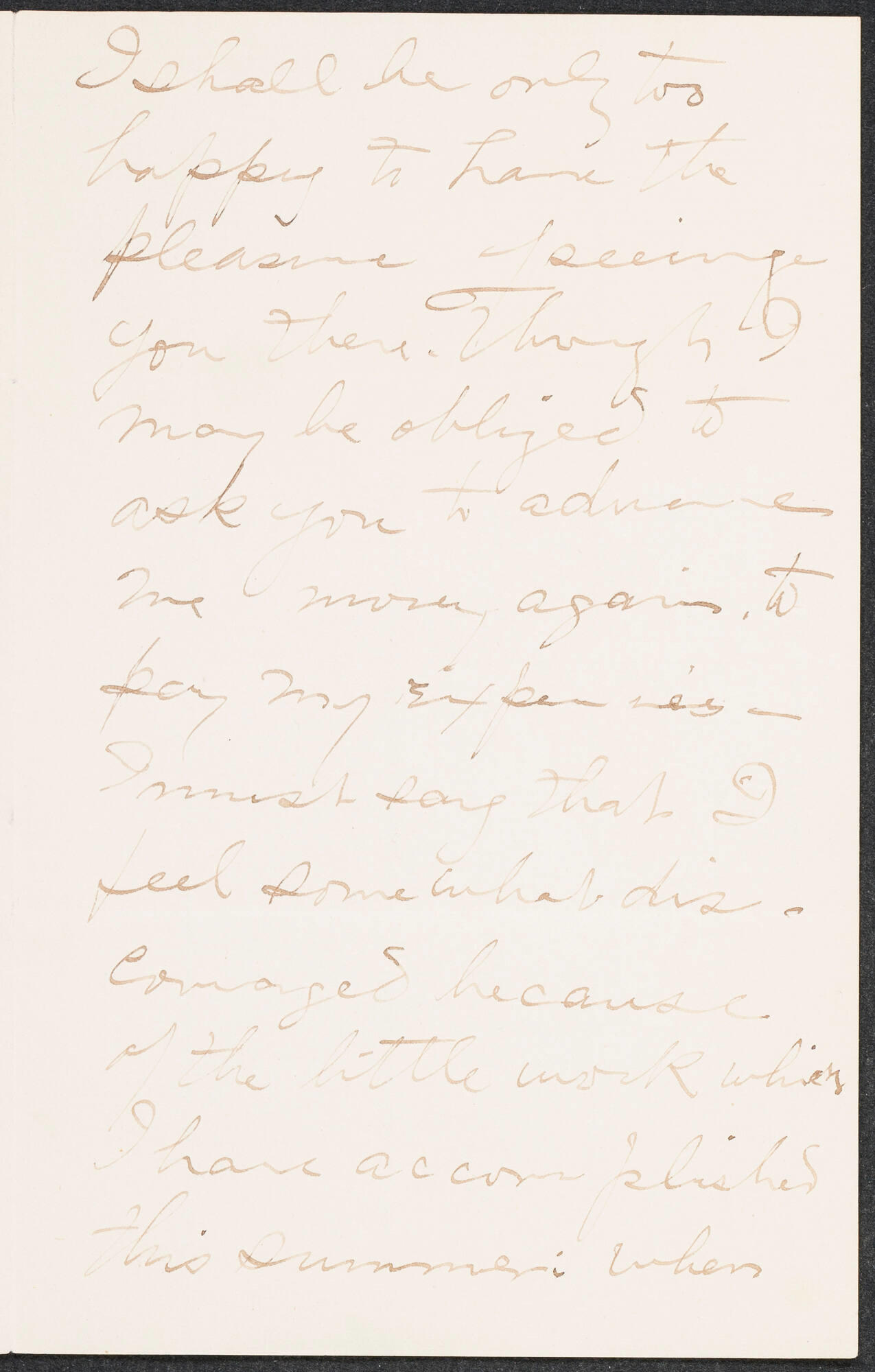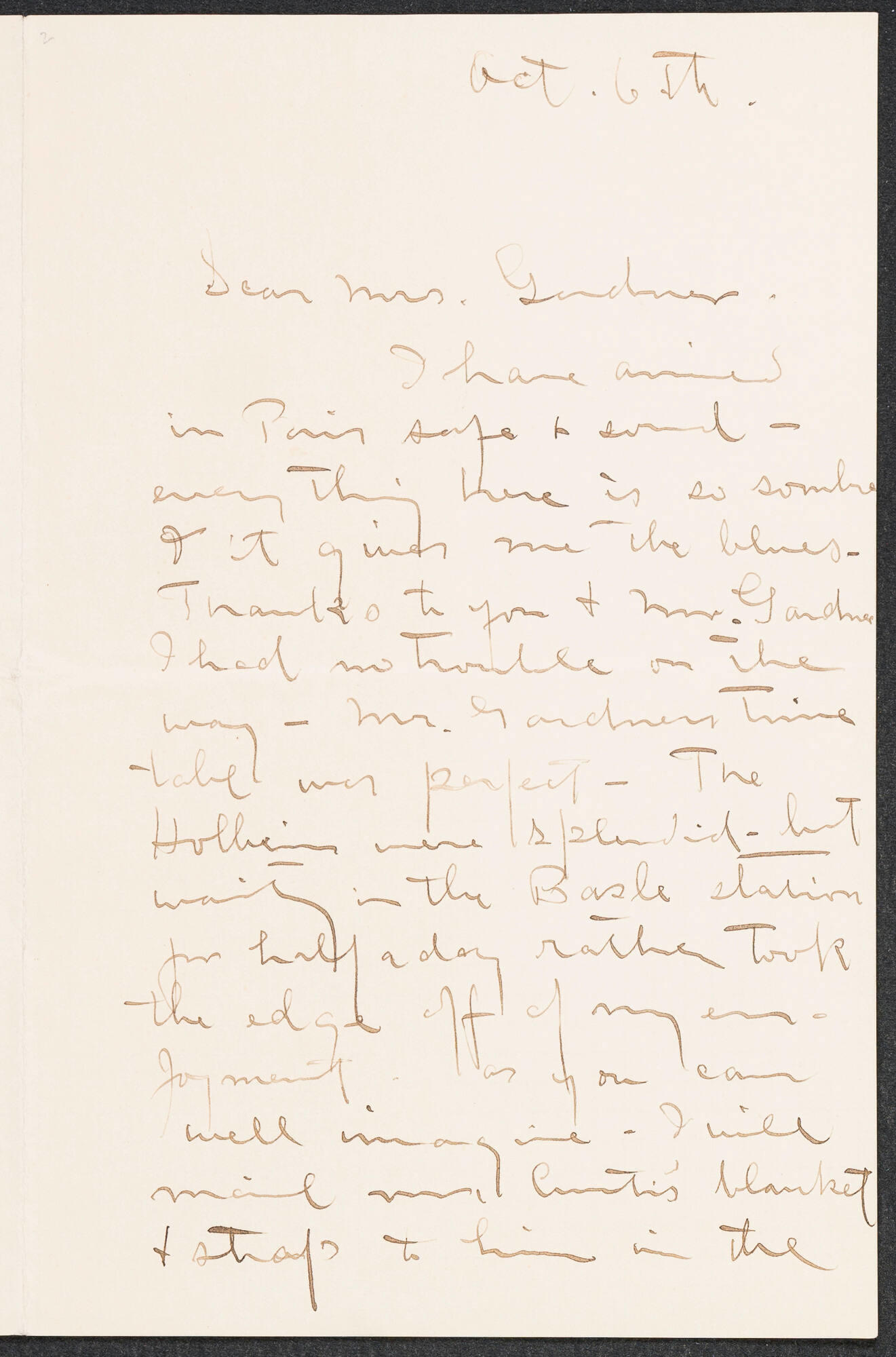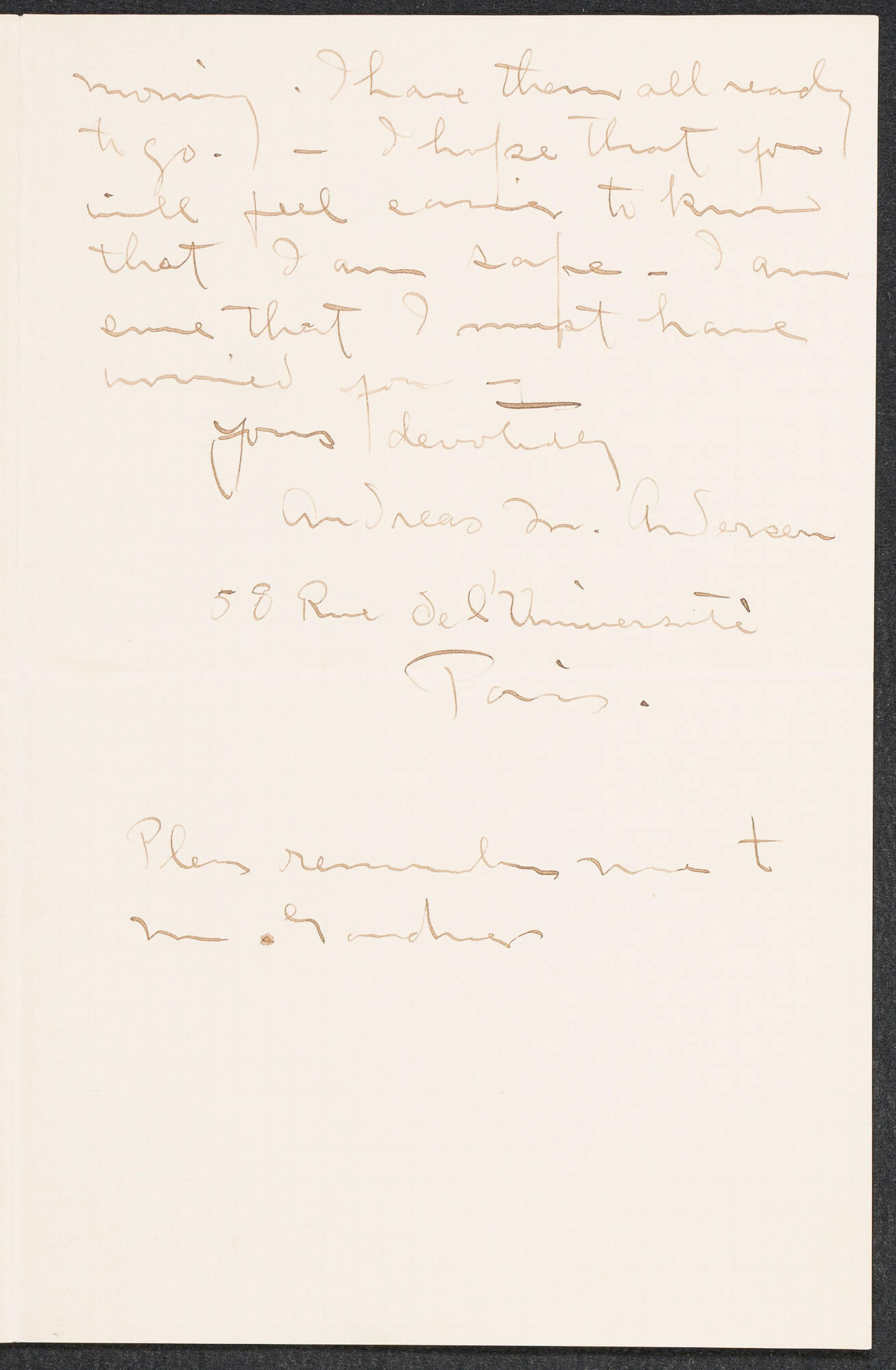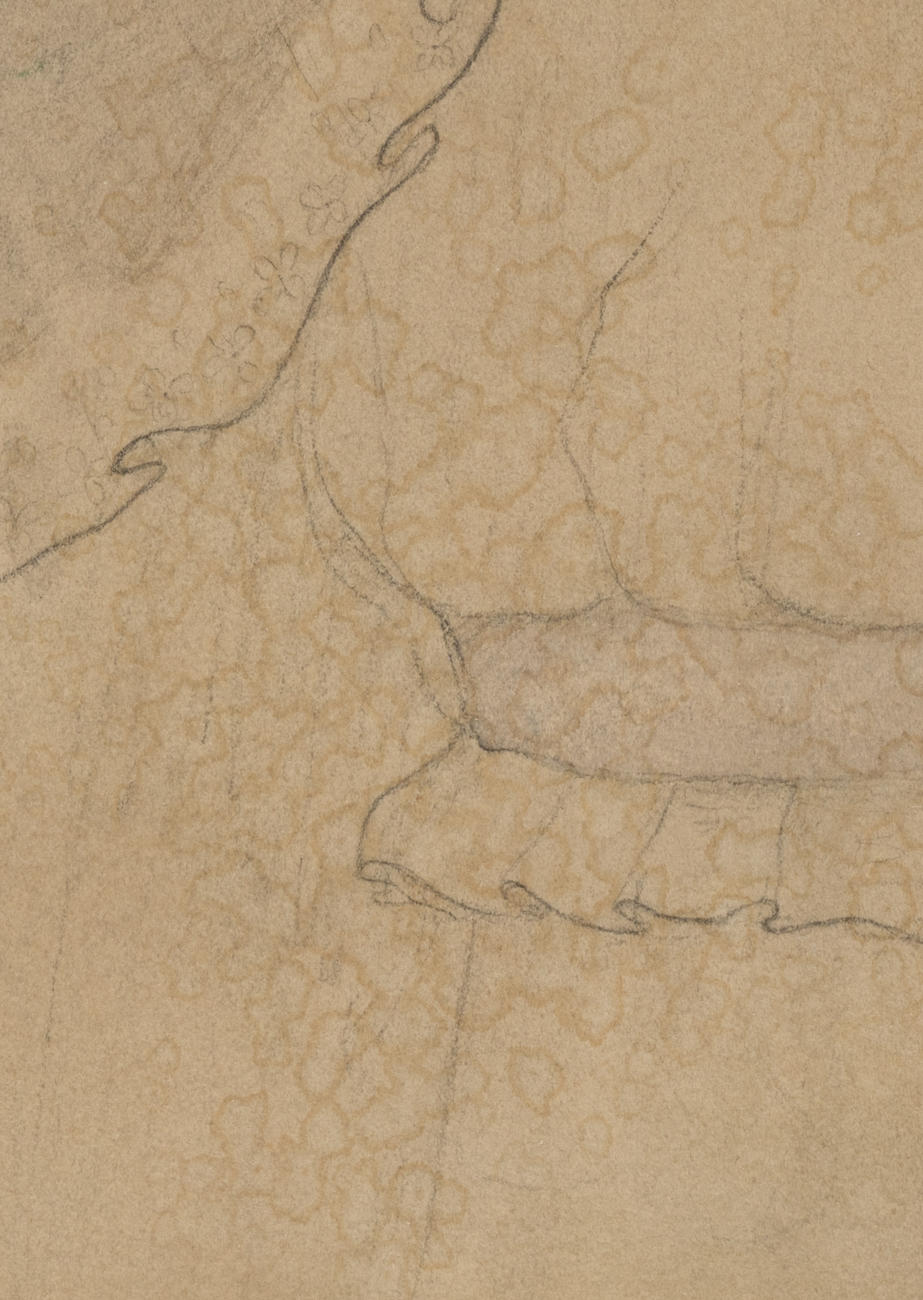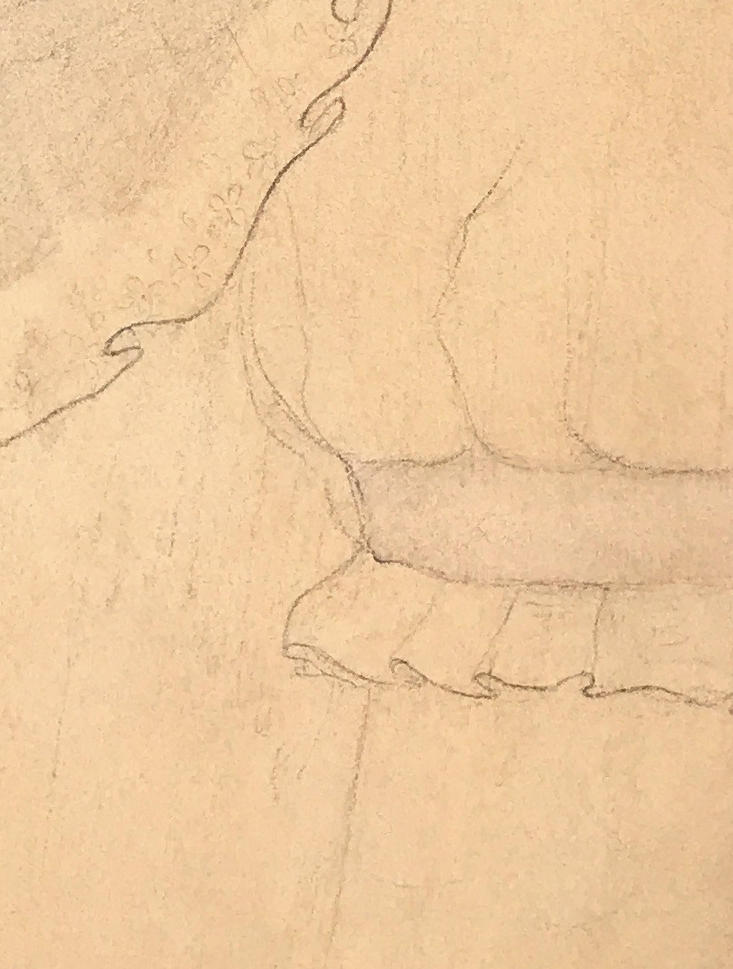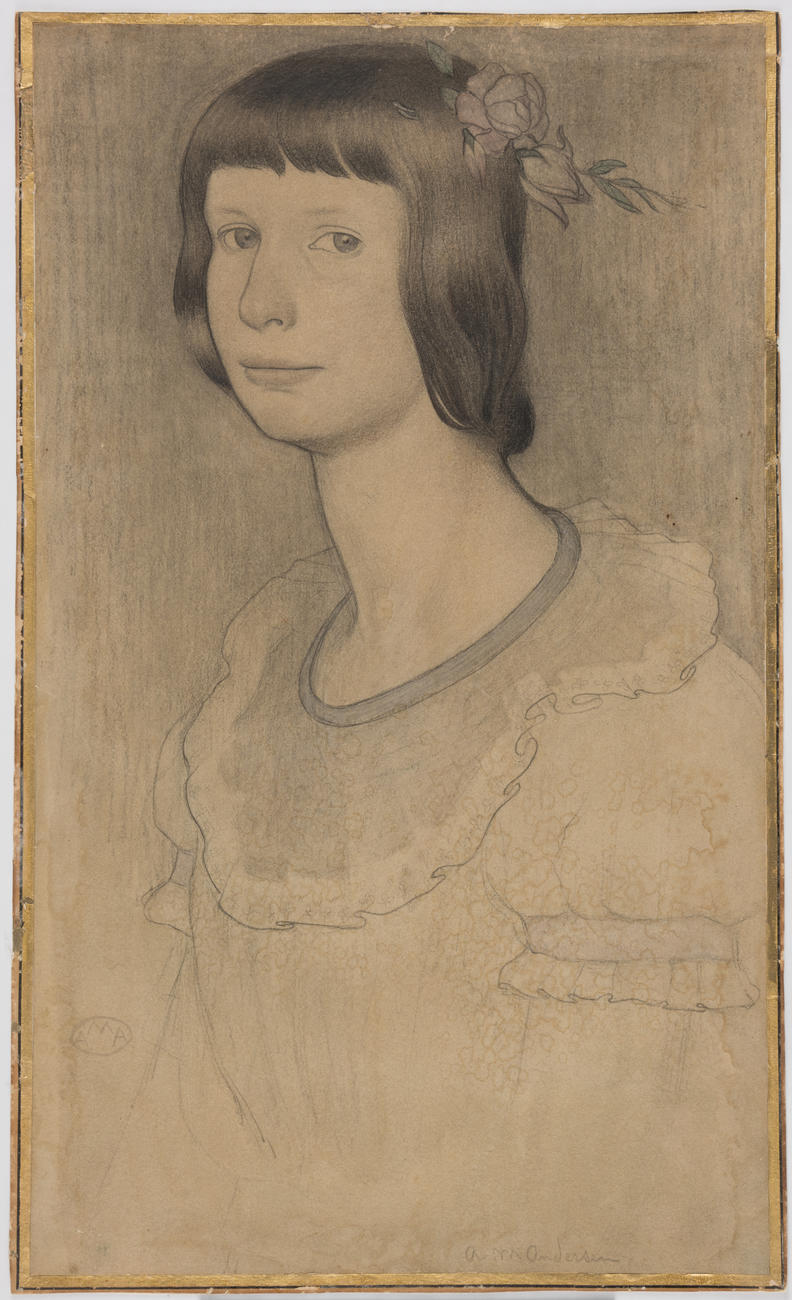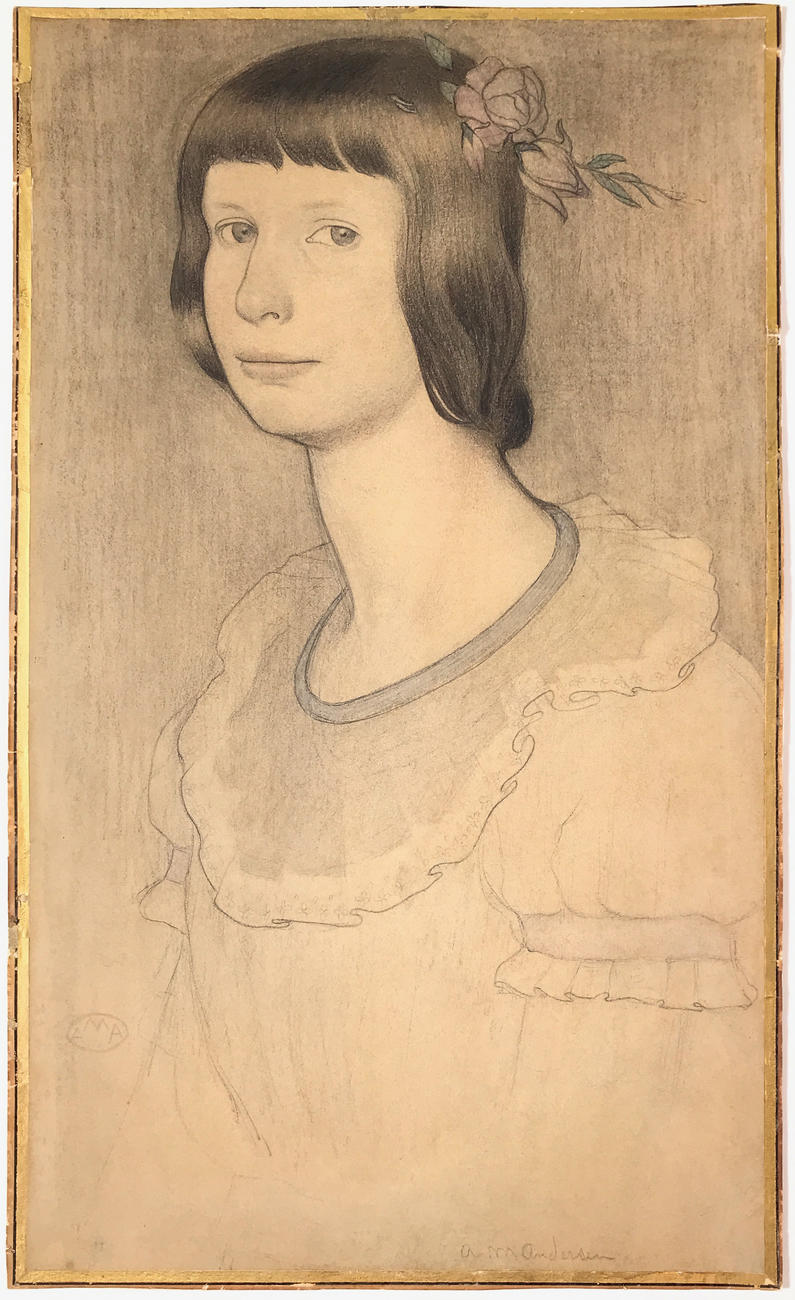The Short Gallery, located on the Museum’s second floor, houses four wooden cabinets. Inside is a treasure trove of master prints and drawings dating from the fifteenth century through Gardner’s lifetime. Newly reinstalled, they hold original works by old masters including Michelangelo, Raphael, Dürer and modern masters such as Henri Matisse, Edgar Degas, John Singer Sargent, and James McNeill Whistler. The display, designed by Isabella, enables visitors to intimately encounter the pieces while simultaneously protecting them from the light.
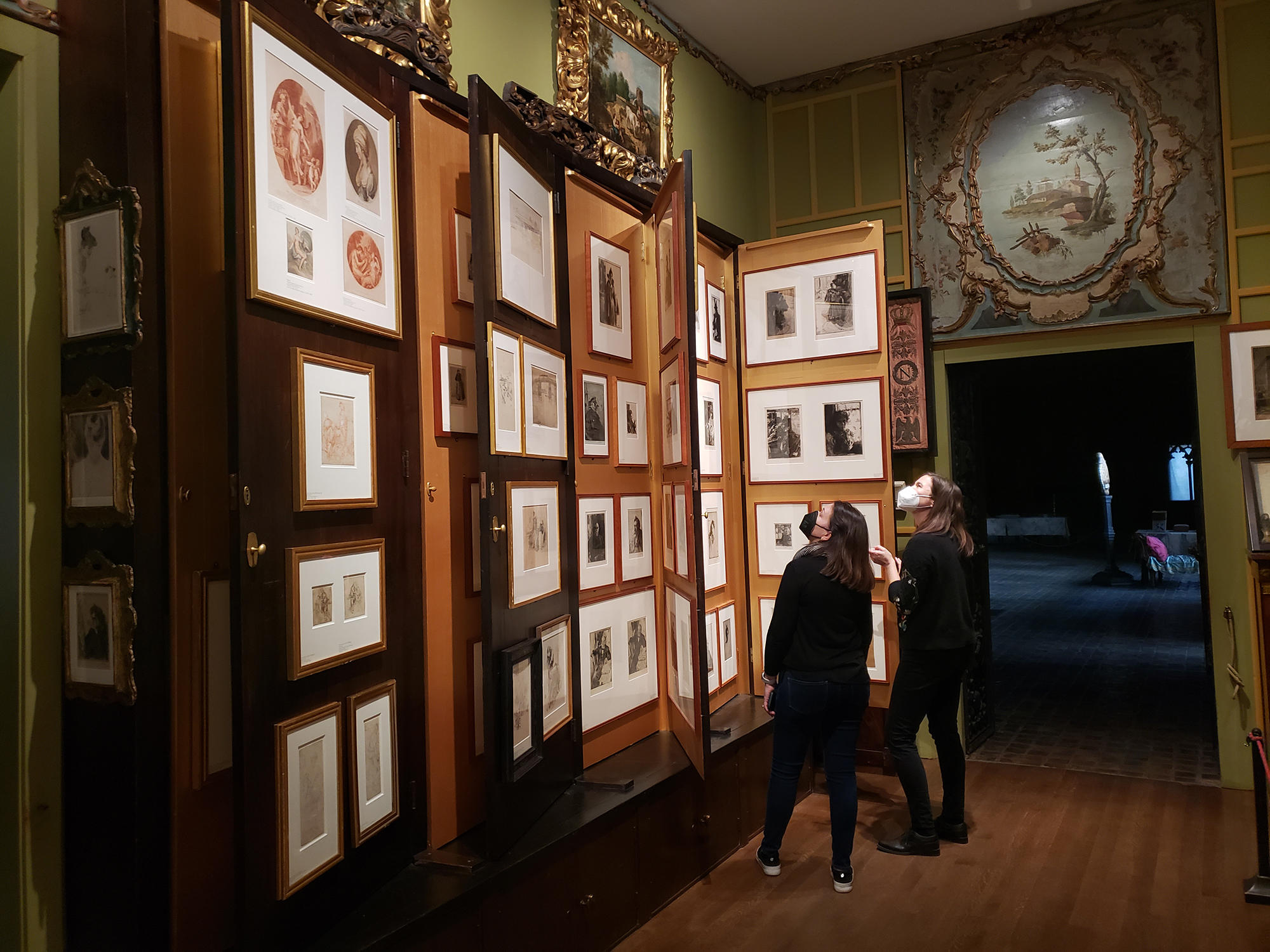
Short Gallery, 2022
Isabella Stewart Gardner Museum, Boston
Conservation of the Short Gallery Works on Paper
Over the past three years, the staff of the Isabella Stewart Gardner Museum and the private conservation firm of Studio TKM Associates, Inc. examined and conserved each of the 187 prints and drawings in the Short Gallery. The conservators used state-of-the-art scientific analytical techniques to learn more about each individual artists’ materials. Most importantly, the project preserved each work so that visitors may enjoy the collection for the centuries to come.
For more information about the Short Gallery conservation project, check out the blog post “Preserving the Works on Paper in the Short Gallery” by Ellen Promise.
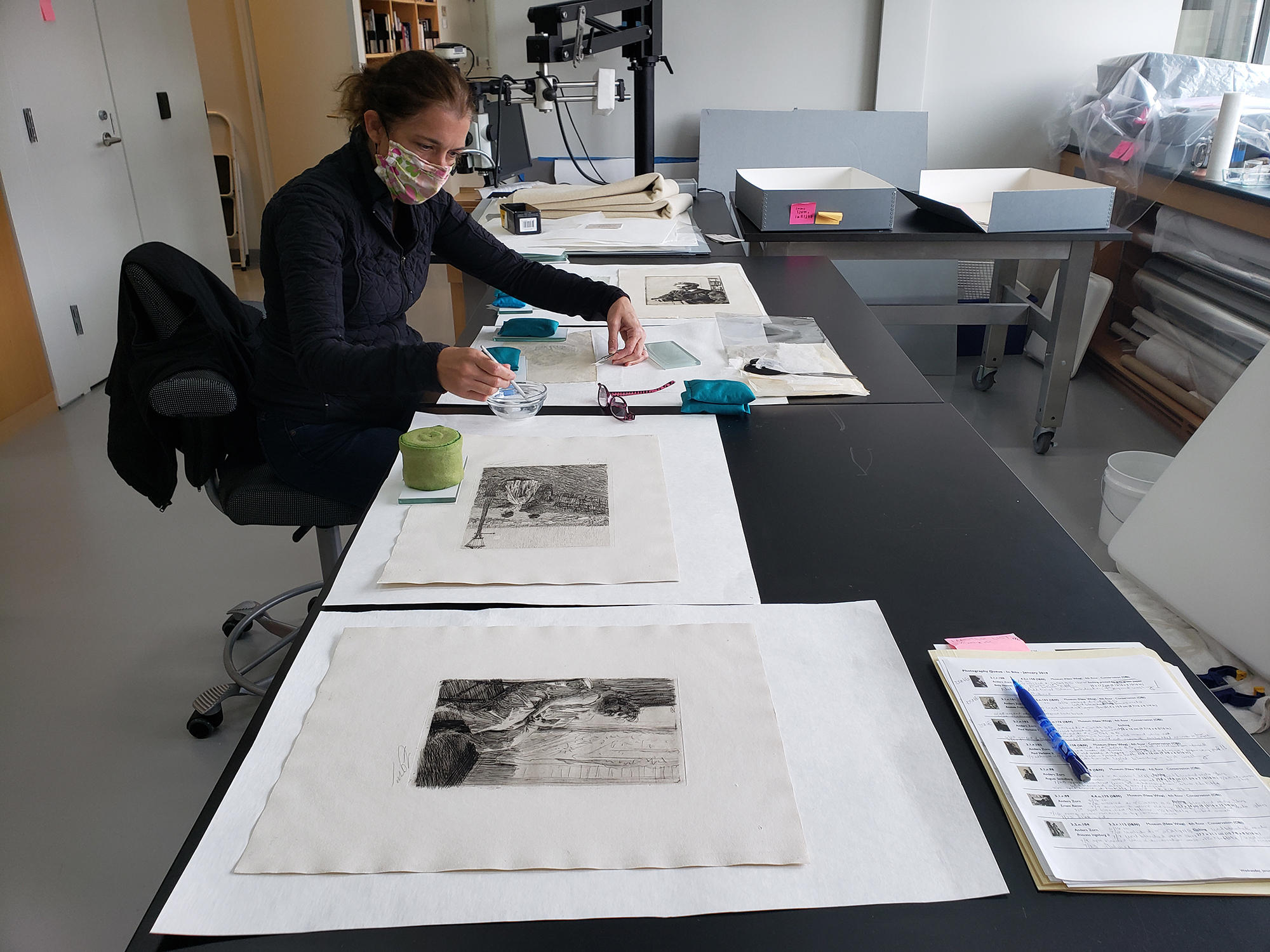
Deborah LaCamera stabilizing several Anders Zorn prints from the Short Gallery in the William and Lia Poorvu Conservation Center.
The team unframed, examined, and reframed each of the Short Gallery drawings and prints. Some artworks required treatment to address condition concerns such as discoloration of the paper, stains, tears, cockling, or other conditions. One of the drawings was the graphite and colored pencil portrait of Florence Hackett by artist Andreas Martin Andersen.

Andreas Martin Andersen (Norwegian, 1869–1902), Florence Hackett, about 1900. Pencil and color washes on gray paper, 44.8 x 26.3 cm (17 5/8 x 10 3/8 in.). Before the 2021-2022 conservation treatment.
Isabella Stewart Gardner Museum, Boston (1.4.o.41). See it in the Short Gallery.
Andreas Martin Andersen’s Art
Born in Norway in 1869, Andreas Martin Andersen emigrated with his family as a young child to Newport, Rhode Island. He was active in Boston as a young artist and found inspiration within the walls of the Gardner Museum. His work includes a painting of the Courtyard’s Torso of Dionysus, as well as a now-lost portrait of Isabella herself.
Written correspondence between Andersen and Gardner illuminates their personal relationship. The letters preserved in the Museum’s collection also show Isabella’s generous patronage. By the end of the nineteenth century, Andreas Martin Andersen returned to Europe to travel and study art. He did so until his untimely death in 1902.
Though the world never saw the full potential of this young artist, the pencil portrait shows Andersen’s blossoming talent. Ms. Hackett’s face and the elegant lines of her long neck are beautifully refined. They offset the looser, more sparing strokes of the pencil that suggest the ruffles and drapery of her blouse. The artist adds deliberate touches of soft color to finish the drawing.

Andreas Martin Andersen (Norwegian, 1869–1902), Florence Hackett, about 1900. Detail of the face
Isabella Stewart Gardner Museum, Boston (1.4.o.41). See it in the Short Gallery.
Conservation of Andersen’s Drawing
Though Ms. Hacket’s appearance retains its elegance and grace, close examination of the paper tells a different story. Like many works of art on paper, this drawing paper appears generally darkened. This condition can result from many factors. Some include exposure to light, poor quality components within the paper, and low quality matting and framing materials.
One can see a particular pattern of staining on the surface of this drawing. Called tideline staining, these dark brown lines are the result of local wetting of the discolored paper. As darkened, old paper becomes wet, soluble material within the paper dissolves and is therefore able to move around within the sheet. As the paper dries, this soluble material travels from within the paper core to the paper surface.
At the wet-dry-interface, just as the tide moves along a beach, a linear brown stain forms. It’s plausible that the tideline staining was the result of droplets. Condensation may have formed on the interior surface of the glass touching the paper surface, causing wet spots. As these wet spots dried, the stains appeared.
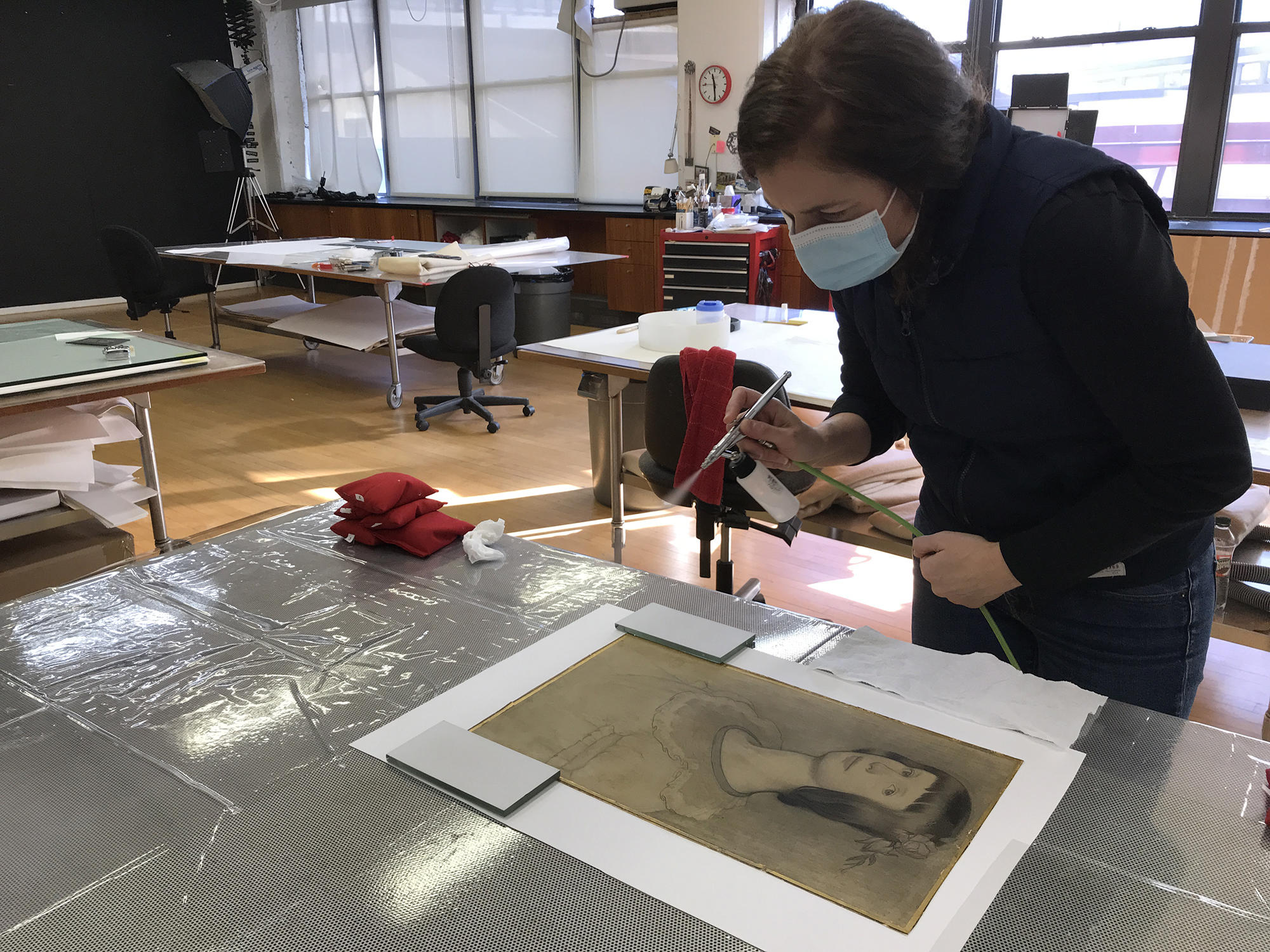
Deborah La Camera removing the tideline stains on a suction table, 2022.
Removing these tideline stains without any alteration of the delicate image was not an easy process. The team treated the drawing in the paper conservation studio. They cleaned it on a suction table, a mesh platform that pulls suction through the artwork by drawing air across the back surface of the paper. The conservators washed only the areas of tideline staining.
They used a gentle method of misting certain areas with an airbrush while under suction. This selectively introduces water only where necessary, and protects areas of the artwork that are sensitive to water. The damaged areas improve in appearance while the artistic image remains unchanged.
Andreas Martin Andersen (Norwegian, 1869–1902), Florence Hackett, about 1900. Detail of the sleeve, showing tideline staining before the 2021-2022 conservation treatment on the left and after treatment on the right
Visit the newly cleaned drawing in the Short Gallery on your next visit!
Andreas Martin Andersen (Norwegian, 1869–1902), Florence Hackett, about 1900. Before and after the 2021-2022 conservation treatment.
You May Also Like

The Blue Room
Explore the Museum

Andreas Martin Andersen (Norwegian, 1869–1902), Surge of the Sea, about 1900
Explore the collection

The Short Gallery
Explore the Museum
